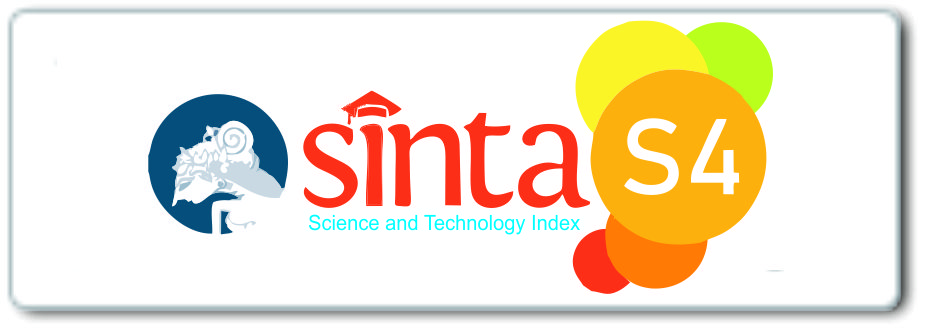Pola Dakwah Tradisionalis Di Kampung Adat Cireundeu
Abstract
Abstract
The success of a missionary in delivering da'wah cannot be separated from the effective pattern he uses. Tabligh or Da'wah is a moral force that is able to drive social change and offers an alternative in building the future dynamics of the ummah, by taking the right, creative and wise ways and strategies. This paper aims to describe the pattern of da'wah in the Cireundeu Cimahi Traditional Village. This research uses descriptive analysis method with a qualitative approach. Data collection techniques used are observation, interviews, and documentation studies. The results of this study explain that Ustad Abdullah uses a traditionalist pattern, namely conveying Islamic messages or teachings from the yellow book. Using the method of delivery by word of mouth, by action, and equipped with writings from books, magazines or relevant leaflets obtained from outside. Cultural communication used is low context communication.Several factors caused the development of da'wah in the Cirendeu village to be hampered, namely: 1) Ingrained customs; 2) lack of creativity of missionaries; 3) limitations of missionaries; 4) The method of da'wah is monotonous; 5) The negative mindset of the followers (adherents of Sunda Wiwitan) towards Muslims; 6) there is no motivation of religious figures.
Keywords
Full Text:
PDFReferences
Aripudin, Acep. Dakwah Antar Budaya. Bandung: Remaja Rosdakarya, 2012.
Cimahikota.go.id. “Mengenal Kampung Adat Cireundeu,” 2019. https://cimahikota.go.id/index.php/artikel/detail/1139-mengenal-kampung-adat-cireundeu.
Gustini, Heni. Studi Budaya Di Indonesia. 17. Bandung: Pusaka utama, 2012.
Hamid, Abdul. “Dakwah Dalam Perspektif Paradigma Tradisionalisme Dan Reformisme.” Kordinat: Jurnal Komunikasi Antar Perguruan Tinggi Agama Islam 15, no. 1 (April 1, 2016): 89–104. https://doi.org/10.15408/kordinat.v15i1.6310.
Hasri, Hasri. “Studi Kritis Pemikiran Pemikir Islam Kontemporer.” Kelola: Journal of Islamic Education Management 1, no. 1 (October 24, 2016): 33–47. https://doi.org/10.24256/kelola.v1i1.427.
HOdKAC. “Hasil Observasi Di Kampung Adat Cireundeu.” Cimahi, 2018.
HSDmPPKKAD. “Hasil Studi Dokumentasi Mengenai Persebaran Penganut Kepercayaan Di Kampung Adat Cirendeu.” Cimahi, 2018.
Indrawardana, Ira. “Berketuhanan Dalam Perspektif Kepercayaan Sunda Wiwitan.” MELINTAS 30, no. 1 (April 1, 2014): 105. https://doi.org/10.26593/mel.v30i1.1284.105-118.
Moleong, Lexy. Metodologi Penelitian Kualitatif. Bandung: Remaja Rosdakarya, 2014.
Muhyiddin, Asep. Metode Pengembangan Dakwah. 15. Bandung: Pusaka utama, 2018.
Saktipraditha, Vega, and Anne Maryani. “Implementasi Makna Prinsip ‘Ngindung Ka Waktu, Mibapa KaJaman’ Terhadap Produk Kebudayaan Kampung Adat Cireundeu.” Prosiding Manajemen Komunikasi 5, no. 2 (2019): 815–21.
Septiani, S. “Pesan Dakwah Dalam Upacara Tradisi Rebo Wekasan Di Situgunung ( Studi Deskriptif Tentang Pesan Dakwah Terhadap Upacara Tradisi Rebo Wekasan Di Situgunung Desa Gede Pangrango, Kecamatan Kadudampit, Kabupaten Sukabumi )”.” 2021. http://digilib.uinsgd.ac.id/12050/5/4_bab1.pdf.
Sugiyono. Metodologi Penelitian Pendidikan Kuantitatif Kualitatif Dan R&D. Bandung: Alfabeta, 2014.
Tramontane, Pirie Marie. “Tinjauan Konsistensi Masyarakat Kampung Adat Cireundeu Dalam Melestarikan Adat Istiadat Leluhur.” ULTIMART Jurnal Komunikasi Visual 10, no. 2 (March 23, 2018): 12–23. https://doi.org/10.31937/ultimart.v10i2.769.
Wardi, Bahtiar. Metodologi Penelitian Ilmu Dakwah. Jakarta: Logos, 2014.
Widyaputra, Fauzan Ahdi, Evi Novianti, and Iriana Bakti. “Citra Kampung Adat Cireundeu Pada Ritual Suraan.” PRofesi Humas Jurnal Ilmiah Ilmu Hubungan Masyarakat 3, no. 2 (February 12, 2019): 219. https://doi.org/10.24198/prh.v3i2.14953.
DOI: http://dx.doi.org/10.29240/jdk.v6i2.3683
Refbacks
- There are currently no refbacks.
Copyright (c) 2021 Ahmad Aliadin, Acep Aripudin, Iwan Sopwandin, Anwar Shadikin

This work is licensed under a Creative Commons Attribution-NonCommercial-ShareAlike 4.0 International License.
INDEXED BY:
 This work is licensed under a Creative Commons Attribution-NonCommercial-ShareAlike 4.0 International License.
This work is licensed under a Creative Commons Attribution-NonCommercial-ShareAlike 4.0 International License.















